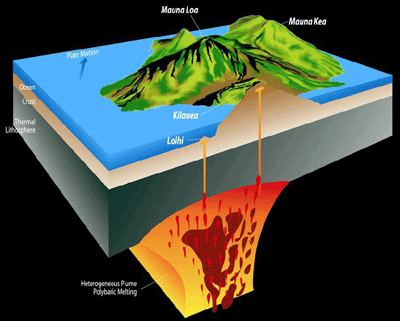FeMO3 Dive Cruise 2008
Report -- 3 October 2008 -- Deep Sea Volcanic Gases
FeMO3 Dive Cruise 2008 |

What is a geochemist like me doing on a ship with a whole bunch of biologists? And why would a geochemist be interested in lava flows on the ocean floor? And why Loihi? To answer the first question, remember that all the interesting microbial communities are living on top of Loihi’s lava flows, and that they need reduced iron to live. The reduced iron, the form that the microbes like to eat, is produced by the deep heat of the volcano and the iron itself comes from the lava flows, so there is a very important relationship between the volcanology (study of volcanoes) and microbiology.

When lava flows are erupted onto the ocean floor, they are very hot, typically 1,200 °C. It is a big shock when they hit seawater that is only a degree or two above freezing, and when that contact happens the outer edge of the lava flow freezes immediately and forms a glassy rim. That glass traps some of the gases within the magma, and is one of the most important samples for studying the gases that come from deep in the Earth. Geochemists are interested in the composition of these magmatic gases because they tell about the origin of the planet, the atmosphere, and the oceans.
These are big questions, so lets try to explore them a little by answering the question about Loihi. Loihi is a unique place on planet Earth because it has an unusually high abundance of helium-3, the rare isotope of helium. In air, there is only about 1 atom of helium-3 for every million atoms of helium-4, the more common isotope. (There isn’t much helium in air, only 5 out of every million atoms, because it escapes from the top of the atmosphere, so that means helium-3 is really rare.) The helium in Loihi lava flows has about thirty times more helium-3 than in air. That surprising finding, which was made about 25 years ago, shows that the mantle underneath Hawaii is very different from most volcanoes on earth. Only Iceland, Galapagos, and Samoa have such high amounts of the rare helium-3 isotope.

One explanation is that the upwelling mantle that causes the Hawaiian volcanoes, which is one of the biggest island chains in the Pacific ocean, comes from so deep in the Earth that it is fundamentally different. Loihi is the youngest volcano in the Hawaiian chain, which means it probably lies directly over the center of the most actively upwelling zone. Due to the high abundance of helium-3, some geochemists think that the source of this hot upwelling material is actually a “primitive” or “primordial” mantle source. The argument is that the deeper parts of the Earth maintain more of the original, or primordial gases, left from formation of the earth 4. 5 billion years ago.
This is a source of great debate among Earth scientists, but no-one disagrees that Loihi is an important place to study gases from inside the earth. One of the things we are doing on the ship is testing a new method for collecting underwater lava flows. The team of gas-rich rock hounds on the ship includes Junji Yamamoto, Jess Deemer and Josh Curtice. We are trying to collect seafloor samples without any contact with air, in order to get a better measurement of magmatic gases from deep in the earth, not just helium, but also neon, argon and xenon; each of them gives us different information about the history and formation of the Earth. To come back to the beginning: the heat that powers the biological communities comes from the deep Earth!
| FeMO3 Cruise Home Page |